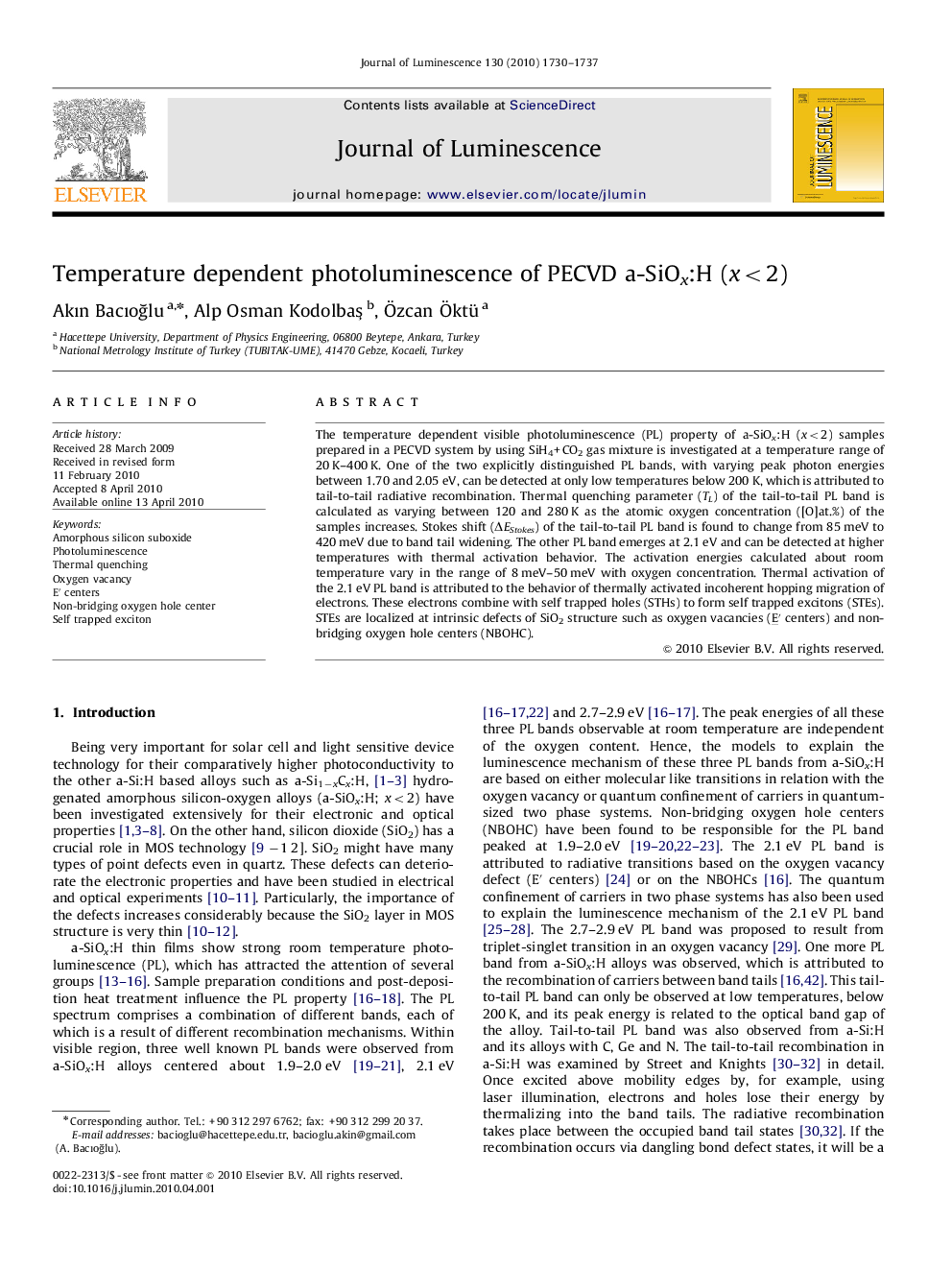| Article ID | Journal | Published Year | Pages | File Type |
|---|---|---|---|---|
| 5402489 | Journal of Luminescence | 2010 | 8 Pages |
Abstract
The temperature dependent visible photoluminescence (PL) property of a-SiOx:H (x<2) samples prepared in a PECVD system by using SiH4+CO2 gas mixture is investigated at a temperature range of 20Â K-400Â K. One of the two explicitly distinguished PL bands, with varying peak photon energies between 1.70 and 2.05Â eV, can be detected at only low temperatures below 200Â K, which is attributed to tail-to-tail radiative recombination. Thermal quenching parameter (TL) of the tail-to-tail PL band is calculated as varying between 120 and 280Â K as the atomic oxygen concentration ([O]at.%) of the samples increases. Stokes shift (ÎEStokes) of the tail-to-tail PL band is found to change from 85Â meV to 420Â meV due to band tail widening. The other PL band emerges at 2.1Â eV and can be detected at higher temperatures with thermal activation behavior. The activation energies calculated about room temperature vary in the range of 8Â meV-50Â meV with oxygen concentration. Thermal activation of the 2.1Â eV PL band is attributed to the behavior of thermally activated incoherent hopping migration of electrons. These electrons combine with self trapped holes (STHs) to form self trapped excitons (STEs). STEs are localized at intrinsic defects of SiO2 structure such as oxygen vacancies (Eâ² centers) and non-bridging oxygen hole centers (NBOHC).
Related Topics
Physical Sciences and Engineering
Chemistry
Physical and Theoretical Chemistry
Authors
Akın BacıoÄlu, Alp Osman KodolbaÅ, Ãzcan Ãktü,
